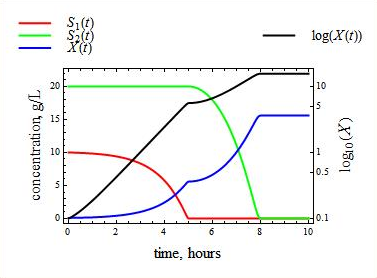Team:Imperial College London/Temporal Control
From 2009.igem.org

Contents |
 Temporal Control
Temporal Control

Engineering Approach to Temporal Control
This temporal control platform showcases our engineering approach in the E.ncapsulator project.
We’ve made our entire system modular. Each module can essentially be pictured as a blackbox with one temporal control input and one output. Therefore, each module is linked to the next module by temporal control. Temporal control has allowed us to create a system that can be reused in other projects in synthetic biology. It is in fact a novel engineering approach that is both reusable and elegant.
Timeline of Temporal Control
Testing Construct
This testing construct was used to test the inducible promoters using flourescent proteins as output reporters.
This timeline shows the sequence of occurrence of these events:
 About the timeline and its explainations.
About the timeline and its explainations.
Our Results
Wetlab
//graph to be decided
Drylab
We have modelled autoinduction by a number of models, and we hope that experimental results will confirm which model is most applicable to our system.
The first of our diauxic growth models is a cybernetic model developed by Kompala et al [1]. This model shows that glucose (S1) is used up before the secondary carbon source (S2). During this phase, the population (X) is in exponential grow until glucose (S1) runs out. This is followed by a stationary growth phase, and finally the population enters a second exponential growth phase as they start uptaking the secondary carbon source (S2).
 about the models and simulations!
about the models and simulations!
References
[1]Kompala, D.S., D. Ramkrishna and G.T. Tsao, "Cybernetic modeling of microbial growth on multiple substrates," Biotechnology and Bioengineering 26 :1272-1281 (1984).
Project Tour


For more details of the temporal control of the system, see the tabs below.
 "
"












